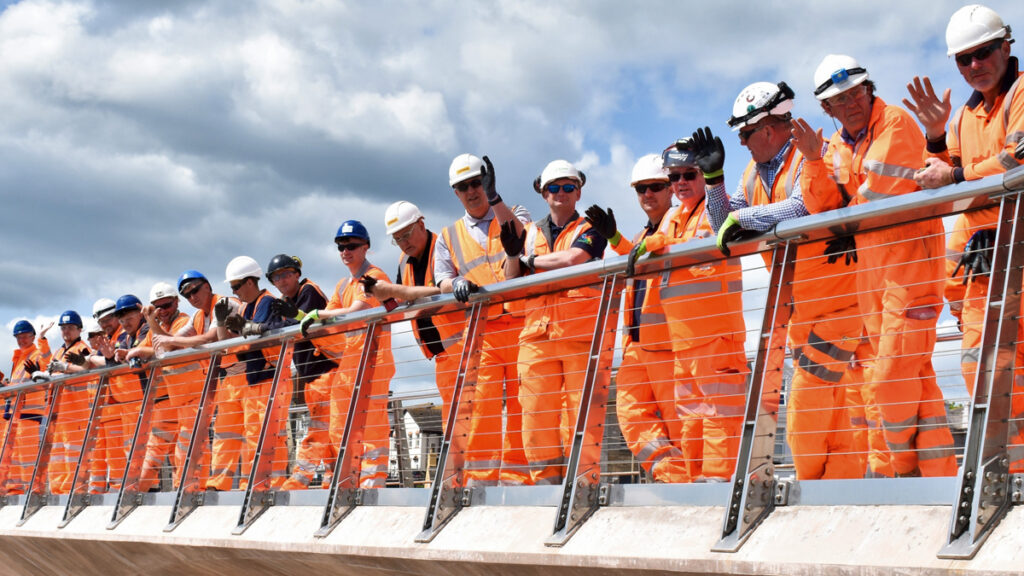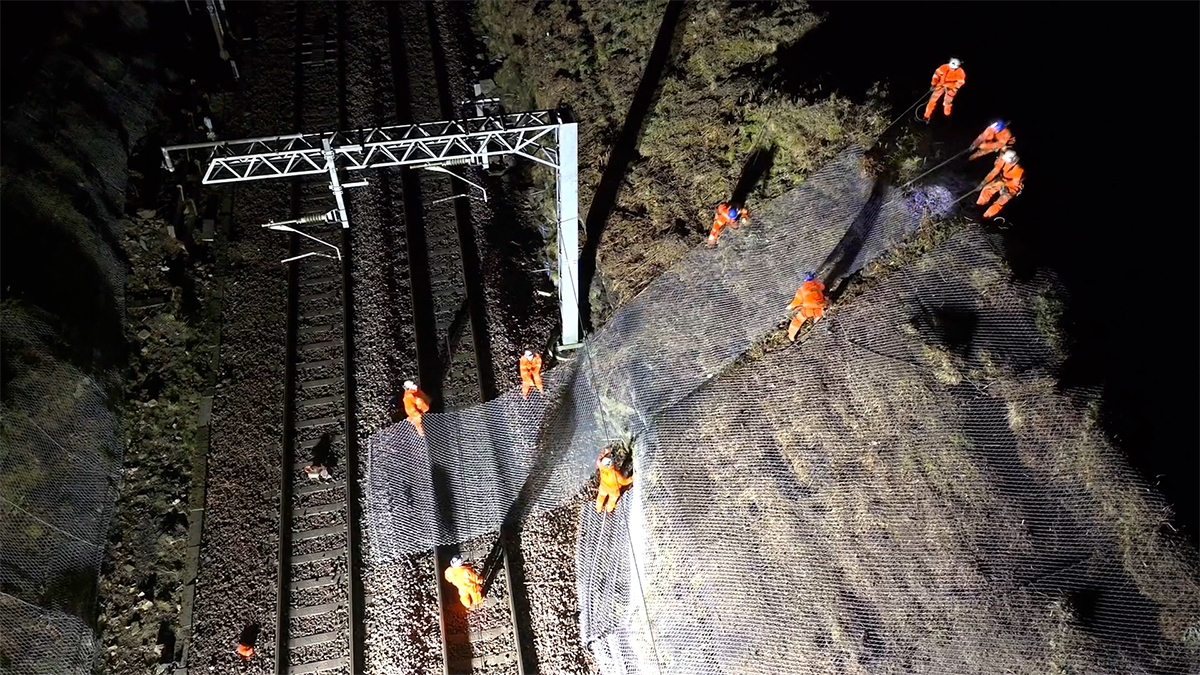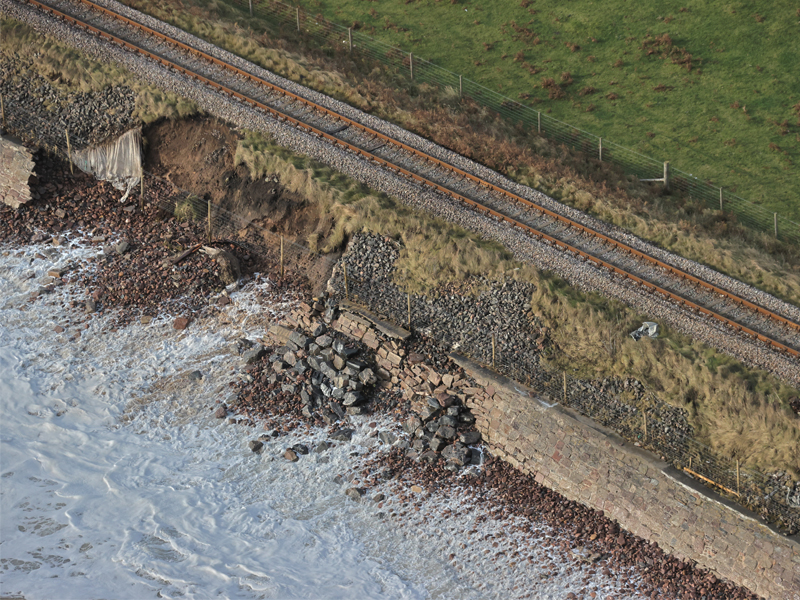We’re increasing the resilience of our railway to better manage the impacts of climate change. It’s an essential part of our work to keep the railway running reliably for years and generations to come.
Climate change and more extreme weather
Our climate is changing. What used to be rare weather events are becoming increasingly common. And in the future, extreme events will be more severe and more frequent.
For example, we experienced the highest number of named storms in the storm season of 2023 to 2024 since the system of naming storms first began in 2015. The season had 12 names storms compared with just two the previous year.
Our summers are becoming hotter and drier but with more intense bursts of rainfall. And our winters are becoming warmer and wetter. This means more frequent weather extremes such as heatwaves and flooding.
Rising sea levels at our coasts mean more impactful storms surges and faster rates of coastal erosion. The vegetation growing season is also becoming longer. All these changes are affecting our railway, and the rate of change will only speed up.
That’s why we must act now to prepare our railway for the new normal. We must ensure our railway is ready for the new extremes so we can continue moving goods and people now and in the future.
Preparing our railway
We’re working with our weather partner MetDesk to develop better forecasts. We’re looking at increasing the length of our forecasts from five days to seven. We’re also working to create hourly forecasts for every two kilometres of our railway.
These highly detailed and longer-ranging forecasts will help us better prepare and plan when severe weather is forecast. For example, we get ready for hot summers by painting sections of our railway white so the rails absorb less heat.
We’re also adapting our railway to recover quickly from the effects of weather impacts. For example, we installed 10,000 tonnes of rock armour on the Cambrian Line in Wales in 2022 to make it more resilient against flooding. The rock armour slows water flow and prevent the ballast – the stones that support the track – from washing away. It means we can reopen the line in days, rather than weeks after flooding.
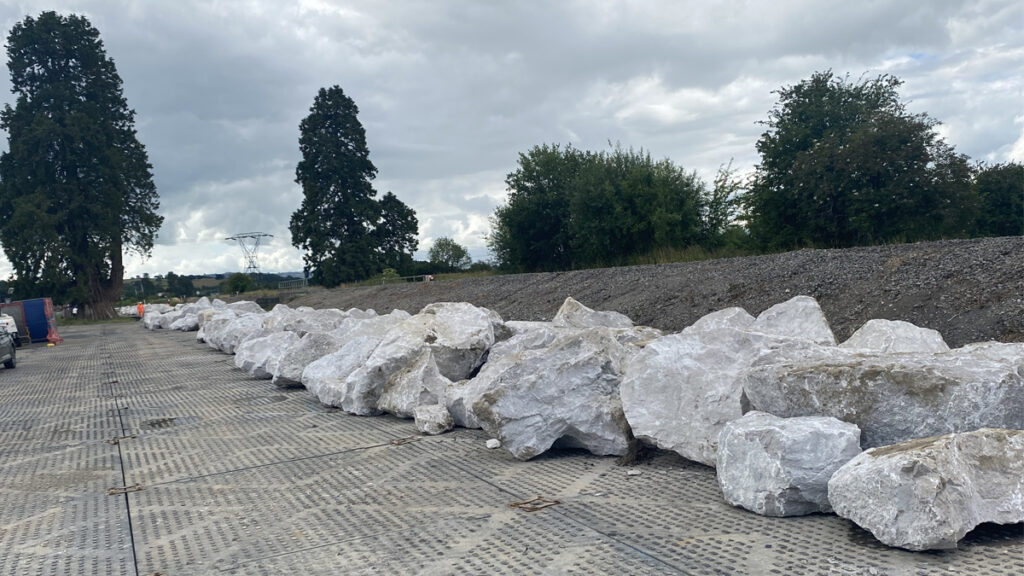
And we’re continuing to build our railway to better resist the effects of severe weather in the first place.
For example, we began a multi-million-pound Severn Estuary resilience programme in summer 2022 to increase the resilience of the line against landslips. The nearby estuary and steep slopes against the line between Newport and Gloucester makes it especially vulnerable. That’s why we installed 3,200 bolts and rockfall netting to fully stabilise more than 17,500 square metres of the cutting alongside the line. The programme will help prevent rock and soil reaching the track – helping keep the line running even during heavy rain and winds.
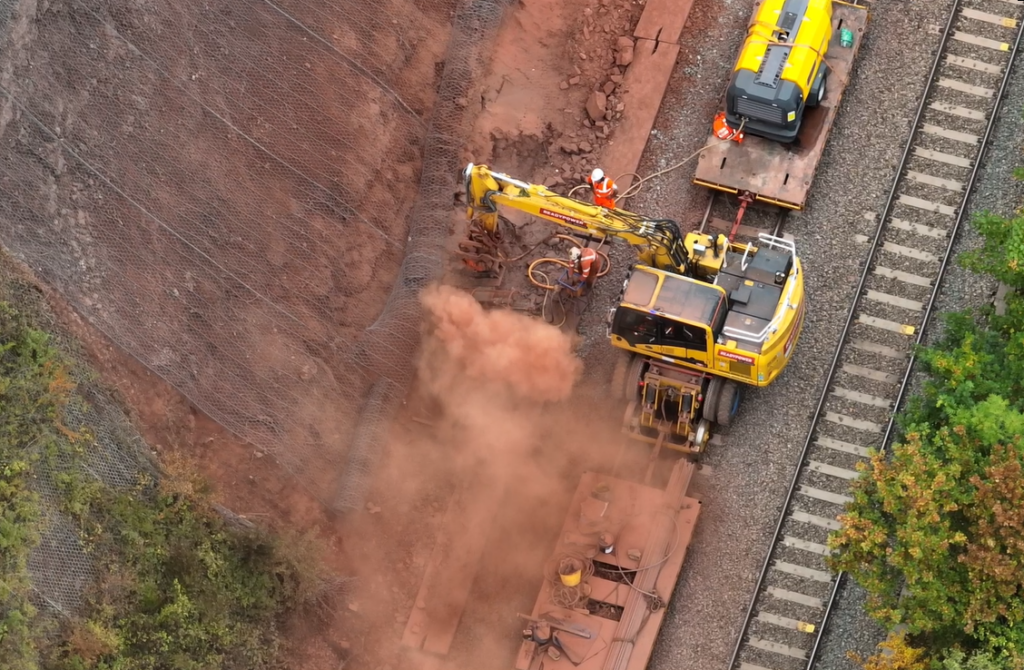
We also built a bigger, longer and stronger sea wall at Dawlish in Devon between 2019 and 2023. The new wall is designed to better resist the rising sea levels and the stronger and bigger waves that severe storms can bring.
